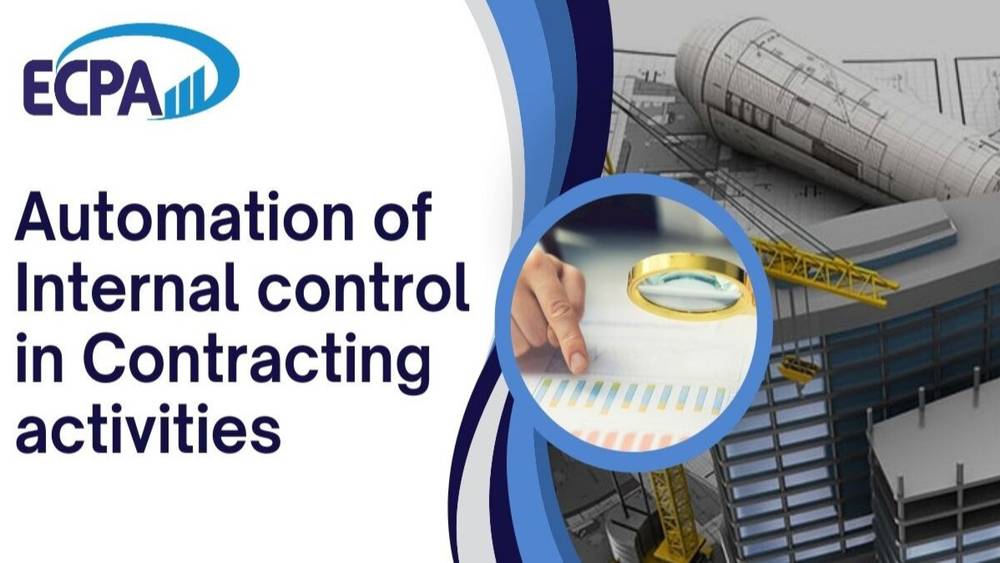Automation of internal control in contracting activities and its implications on the quality of operation
Automated internal control systems in contracting companies are digital systems that help control financial and administrative processes, enhance the efficiency of Project Management, and improve compliance with laws and standards. The following are the most prominent types used:
![]() Amer Ibrahim - • Internal Control
Amer Ibrahim - • Internal Control

Automated internal control systems in contracting companies are digital systems that help control financial and administrative processes, enhance the efficiency of Project Management, and improve compliance with laws and standards. The following are the most prominent types used:
1. Enterprise resource management systems (ERP)
- These systems help in the integration of various departments, such as accounting, project management, procurement, ensuring the smooth flow of data between departments.
2. Automated financial accounting systems
- These systems provide tools to accurately manage accounts, costs and prepare financial reports, facilitating external audits.
3. Project management systems (PMS)
- Enables companies to follow the progress of projects, adjust budgets, and manage resources efficiently, reducing the chances of errors and mismanagement.
4. Inventory control and procurement systems
- Help keep track of materials used in projects, adjust purchases, prevent inventory manipulation.
5. Risk management and compliance systems
- Monitors compliance with internal policies and regulatory acts, strengthening internal control and helping external auditors to effectively assess risks.
6. Cash flow and payment management systems
- These systems ensure the accuracy of payment and collection operations, facilitate the monitoring of financial flows within the company.
7. Electronic archiving and documentation systems
- Used to save financial and administrative documents and documents digitally, making them easily accessible during audits and audits.
The importance of applying these systems
Automated internal control systems are of great importance in construction companies, as they provide fundamental improvements in the management of financial and administrative processes. Here are the main benefits of these systems:
1. Enhance accuracy and reduce errors
- Automated internal control systems reduce the likelihood of human errors in data entry and processing, which improves the quality of financial and accounting information.
2. Improved project and cost management
- These systems enable companies to accurately track the costs of projects, which helps in adjusting budgets and preventing unnecessary financial excesses.
3. Raising the level of transparency and accountability
- Provides detailed electronic records of all financial transactions, which facilitates tracking operations and ensuring compliance with internal policies and accounting standards.
4. Enhance the speed of operations and decision-making
- Electronic systems give quick access to data, which helps senior management and external auditors to make informed decisions in record time.
5. Improve compliance with laws and regulations
- These systems help to ensure compliance with legal and regulatory requirements such as taxes, licenses and financial reporting in accordance with international standards.
6. Combating fraud and financial manipulation
- Provides automatic monitoring mechanisms that help detect any suspicious or illegal transactions, reducing the risk of fraud within the company.
7. Strengthening cooperation between different departments
- Automated internal control makes it easier to share information between departments, such as accounting, procurement and Project Management, which improves coordination and facilitates audit
Potential challenges:
- The need for initial investments for the implementation of the system.
- Cybersecurity risks and data protection from hacks.
- The need to train employees to ensure the effective use of systems.
In short, automated internal control systems are a key element in improving the efficiency of construction companies and developing the quality of financial reporting, which positively reflects on the external audit process